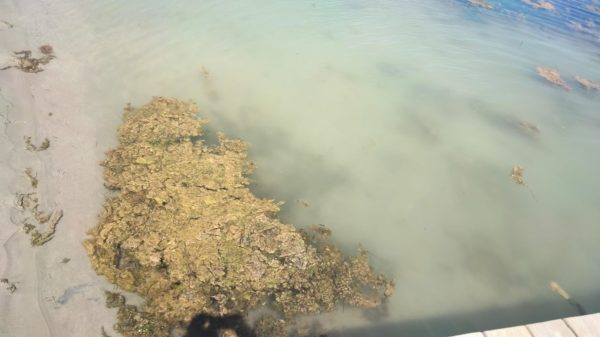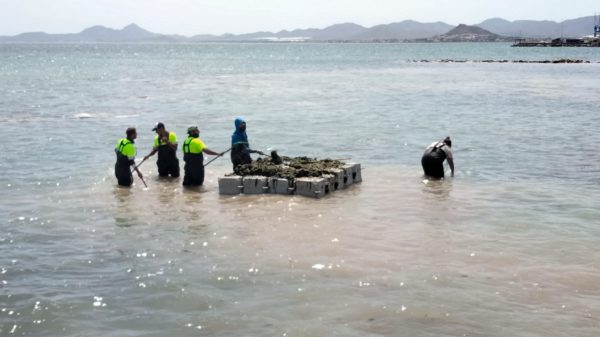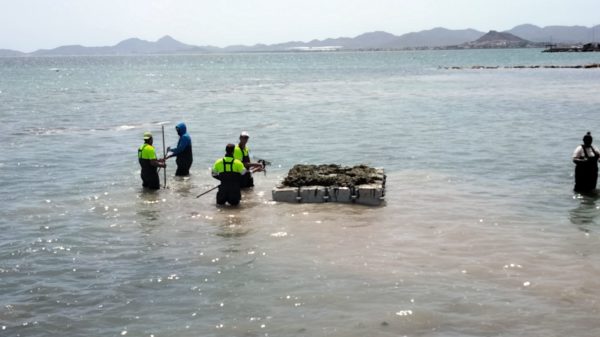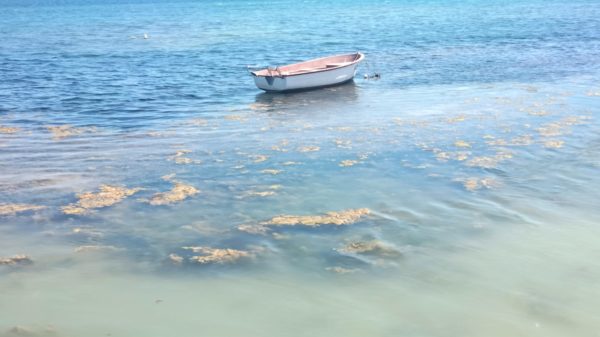The ongoing problems of the Mar Menor were hit again by a mass of algae, stretching across the lagoon shores.
Cartagena Council have made a statement concerning the pollution of the Mar Menor lagoon, with temporary floating pontoons being installed in Los Nietos, Playa Honda and Playa Cavanna.
The Council announced that the clearance should be finished by mid-June.
One of Europe’s largest and most endangered saltwater lagoons, it is deemed the Mar Menor is facing a less fetid future after Spain’s senate voted to grant the threatened ecosystem legal status as a person.
The Mar Menor, a protected area off south-east Spain separated from the Mediterranean by a 13-mile sandbar, has been polluted by poor sewage systems, fertilisers and discharge from mining activities.
Eight years ago, its waters turned green when algal blooms killed off 85% of the vegetation on its seabed.
Dire conditions in the lagoon led more than 640,000 people to back a campaign to safeguard the Mar Menor by having it recognised as a legal ‘person’ that can be protected and preserved by the government and residents.
A plethora of residents put up posters in their Mar Menor houses with the slogan ‘Save The Mar Menor’.
A law to afford the Mar Menor special protection was approved by congress and was ratified by Spain’s senate, it being the first time such a measure had been approved in Spain.
The legislation codifies the lagoon’s right to exist as an ecosystem and to evolve naturally and recognises its right to protection, conservation and restoration.
A total of 1,600 sq km – 620 square miles – of the lagoon and the nearby Mediterranean coastline is legally represented by a group of caretakers, consisting of local officials, local citizens – and scientists who work in the area, under the banner of The Pact for the Mar Menor Platform.
The Mar Menor has made history with 640,000 people signing their names so that it could have legal status as a person.
The Mar Menor lagoon is one of the most important ecological singularities in the Mediterranean area.
An area where many economic and industrial activities meet. The sum of the impacts of mining, agriculture and urban development in the surroundings to the lagoon during the last decades has affected its ecosystem.
Studies undertaken by researchers during the last 20 years, regarding the impacts of human activities in the lagoon, report data of contamination levels and the effects generated in the ecosystem of the lagoon.
Changes to more friendly agricultural techniques in the surrounding areas are necessary, with stricter environmental regulations in order to preserve important ecological values of the lagoon, – and public health.
In 2022 the Regional Government introduced a new farm overseer regarding nitrate running off farms in the Campo de Cartagena, dubbed the ‘Agri-enviromental Operator’.
The move was to guarantee the protection and recovery of the ecosystem, said Regional Minister for Water, Agricultural, Livestock, Fisheries and Environment, Antonio Lungo.
Algae is caused by too many nutrients in the water; nitrogen and phosphorus, caused by run off from contaminated farm water.
In Los Alcázares, a team have been active in clearing a plethora of algae blooms – once again raising concerns, with the summer season looming.










